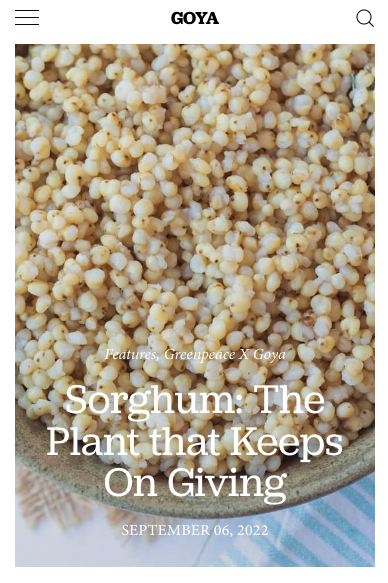FIGHTING CLIMATE CHANGE WITH FOOD
This series is a collaboration between Goya & Greenpeace. Writers, researchers and activists explore what sustainability looks like out in the field, and as an extension, in your kitchen. From seed libraries and their importance in the face of climate change, to how the cultivation of ragi is woven into the needs of soil, livestock and nutrition; finding alternative uses for spent grain in the microbrewery capital of India, and offering insight into building your own toolkit for gauging sustainability, this series offers a slice of what sustainable, organic agriculture and consumption in India looks like today.
As published in Goya Journal on September 06, 2022.
If there was an order to the chaos I witnessed, it was definitely lost on me. The table in the middle was doused with flour as the women seated around it furiously patted on small dough balls, beating them into perfectly round rotis. At some point, one stopped and slid her creation in the direction of another, who continued to add a few more taps. Some rotis moved in a logical manner from one person to another, while others slid in random directions. But no matter which way they went, they eventually came by the person seated at the hot plate and the stove.
Using a cotton cloth, she flipped the rotis on the plate before subjecting them to some direct heat and finally depositing them in the baskets placed nearby. The rotis were quickly whisked away for the hungry customers outside, where they were served with a generous dollop of butter. Standing in the crowded kitchen of a popular eatery in Bangalore, I had just seen the dizzying process of making North Karnataka’s staple flatbread, jolada roti!
Jola, jawari, jonna, juara, cholum, solum — you may know it by different names depending on where you are from, but for all the familiarity, sorghum, as it is commonly known, remains shrouded in mystery for many of us.
To read the complete story, visit Goya.in.
